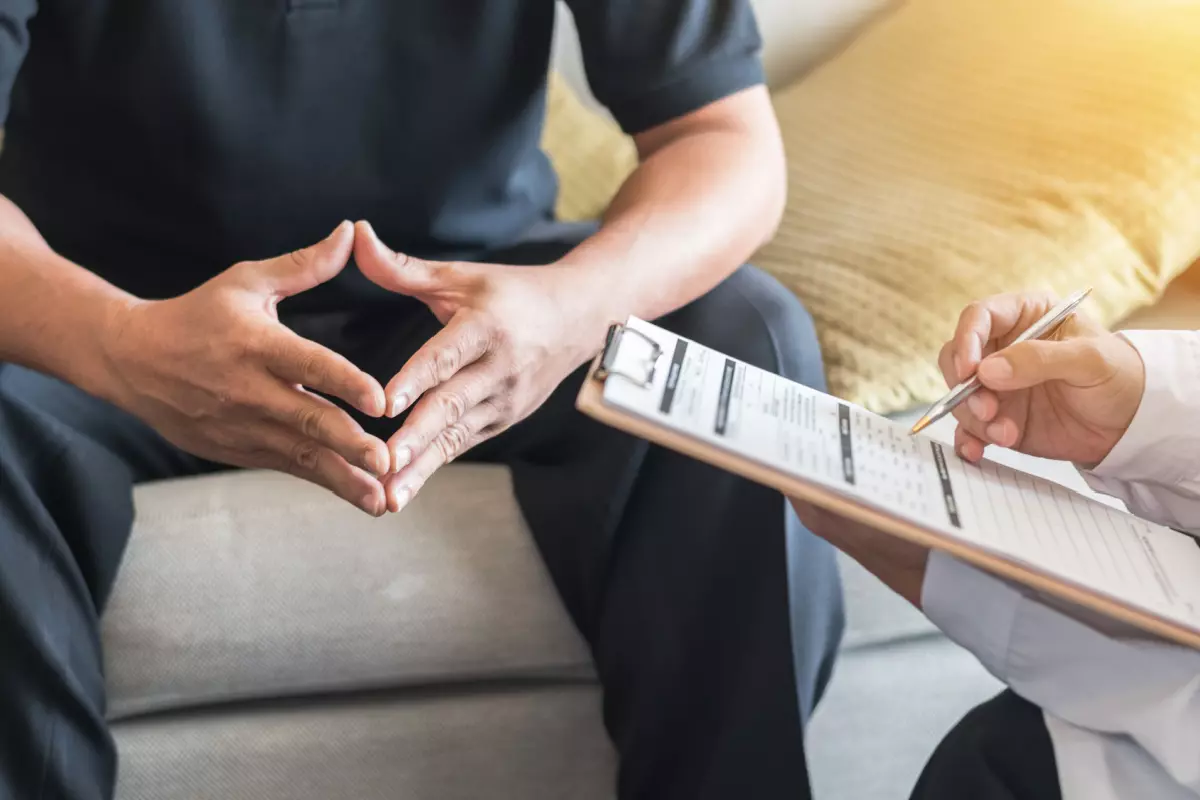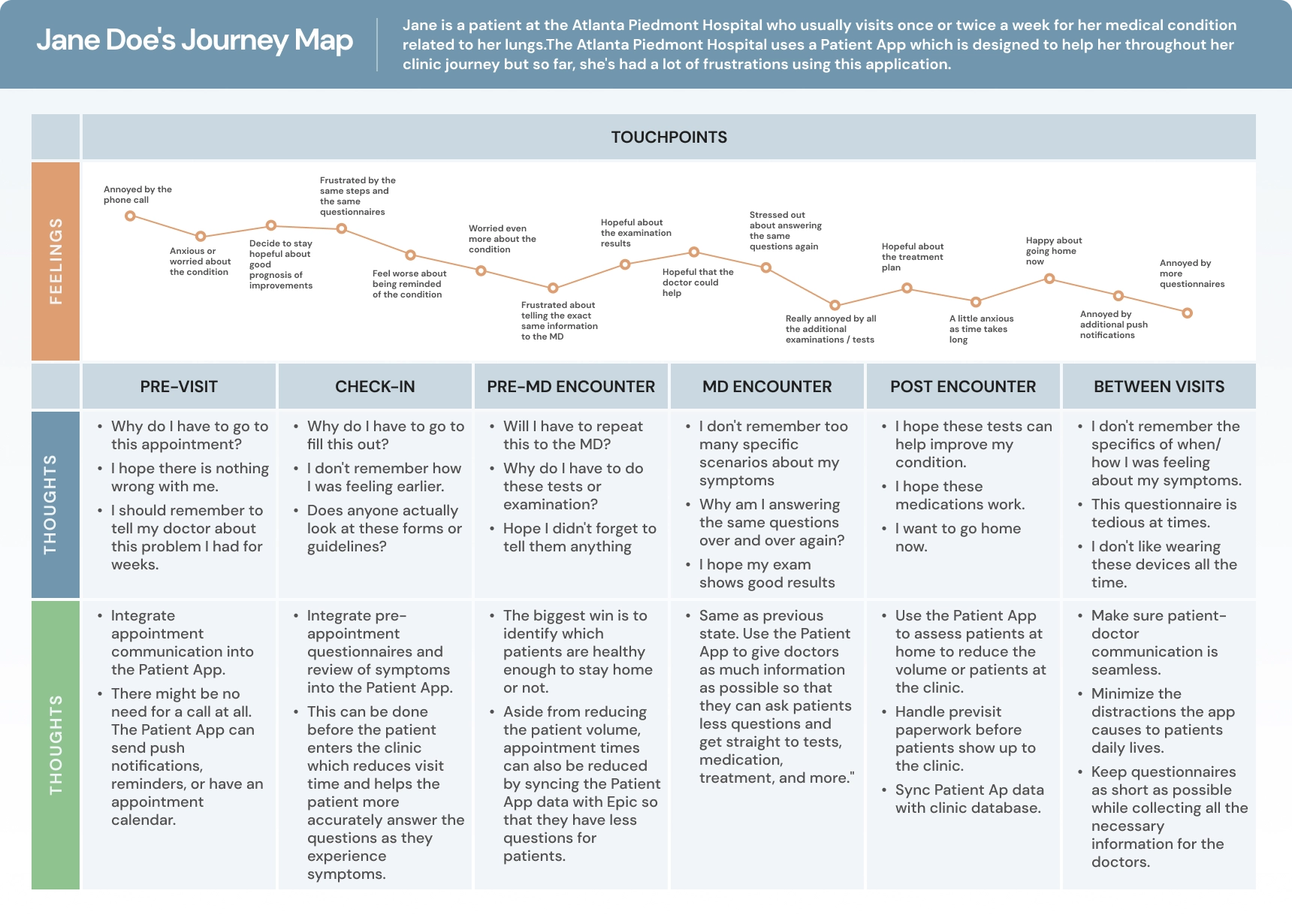Table of Contents
- What Is Patient Journey Mapping?
- The 5 Stages of the Patient Journey
- What Is the Purpose of Patient Journey Mapping?
- What Are the Benefits of Mapping Your Patient Journey?
- 4 Types of Patient Journey Maps
- Current State
- Day-in-the-Life
- Future State
- Service Blueprint
- Who Are the Stakeholders of Patient Journey Mapping?
- How to Map Your Patient Journey?
- Understand Your Patients
- Patient Activation
- Equip the Facility
- Interact with Patients
- Patient Retention
- Final Thoughts
The patient journey includes the entire timeline of a patient interacting with a healthcare facility. It starts when the patient learns about the clinic’s existence and ends long after treatment.
A patient journey map is a tool that health clinics use to better understand how patients interact with the facility throughout their journey. It encompasses different touchpoints of interaction, from awareness to ongoing care, and assists in creating strategies to attract and retain patients.
Mapping the patient journey can help increase patient retention by improving your patients’ experiences at your clinic. Discover how to design your patient journey map and use it to improve operations at your facility below.
What Is Patient Journey Mapping?
Patient journey mapping is an exercise that healthcare facilities perform to understand how a patient interacts with the clinic at various stages in the treatment process. It incorporates the entire patient experience, including pre-and post-treatment. Pre-treatment includes identifying symptoms and searching for a clinic, while post-treatment concerns follow-up care.

By visualizing the journey map, medical practice owners and their marketing teams can better view all internal and external factors affecting the patient flow, such as the clinic’s infrastructure or patient availability during the day. This bigger picture aids decision-makers in tailoring strategies to improve patient engagement and satisfaction.
The 5 Stages of the Patient Journey
You would be mistaken to think the patient journey encompasses only the patient’s visit and direct care. In reality, the patient journey consists of five essential stages. Identifying these five phases will help you gain a comprehensive understanding of your patient’s experiences:
- Pre-visit Awareness. This is when the prospective patient learns about your service through digital or physical touchpoints. The patient comes across your clinic’s website when searching for treatment options.
- Initial Contact. After determining whether your facility offers the service they need, the patient contacts the clinic via phone, chat, email, or an in-person visit.
- Care. The patient arrives for a pre-booked appointment or walks in and is assessed at your medical facility.
- Treatment. During the appointment, the physician provides on-site care, including an examination, treatment options, necessary prescriptions, or suggested lifestyle changes.
- Ongoing Care. The physician monitors the patient’s health and checks how they adapt to their care. At this stage, the clinic gathers positive and negative feedback through follow-up calls and surveys regarding the patient experience, which can be crucial for improving the patient experience and quality of care.
What Is the Purpose of Patient Journey Mapping?
Patient journey maps aren’t just abstract concepts. They allow medical facilities to put themselves in their patient’s shoes and evaluate their experience holistically. You can gain insight into areas of care you may have overlooked or missed, such as communication barriers between the patient and the provider. A visual representation of the patient journey helps care providers spot gaps at different stages and work on solutions that ensure a seamless patient experience.

For instance, a congested appointment line can hinder booking, leading to lost patients. Or patients canceling their appointments because of a scheduling conflict and never receiving a follow-up can result in client loss. The patient journey map identifies these inconsistencies and helps you monitor the issue and develop solutions. For instance, a possible solution to reduce patient no-shows at the clinic may be to send automatic reminders.
What Are the Benefits of Mapping Your Patient Journey?
Developing and evaluating a patient journey map can offer the following benefits:
- Creation of personalized experiences by understanding the patient’s needs and preferences.
- Shared viewpoint of the patient experience by stakeholders.
- Alignment of your and your patient’s goals.
- Improved communication between patients and care providers by identifying pitfalls and opportunities for improvement.
- Improved operational efficiency by constantly monitoring insights from the patient journey.
- New opportunities to increase patient satisfaction by providing extra pre- and post-clinical support.
- Identification of pain points by spotting them earlier.
- Streamlining the workflow of care providers by making them prepared for any potential problems.
4 Types of Patient Journey Maps
When mapping your patient journey, there are four different types you can consider. Each map serves a different purpose, and you can choose to develop one that matches your patients’ needs the most.
Current State
The current state journey map illustrates what your patients do, think, and feel as they move through the entire patient journey. It helps identify a patient’s potential risk and drives improvements to enhance the patient experience.
For example, patients may put off treatment due to a lack of funds. One way to address funding issues is to offer patient financing directly at your clinic. As a result, your patients won’t have to pay the full cost of treatment upfront. Instead, they can pay in smaller installments and receive the care they need. In turn, this can improve your patients’ accessibility to healthcare and clinics, enhancing the patient experience and journey.

Day-in-the-Life
A day-in-the-life journey map shows what your patients do, think, and feel today regarding different steps in the patient process. It is focused on one day of interaction at any stage of the journey map. This journey map provides insight into what a patient experiences inside and outside the facility and helps identify missed opportunities to better engage with your patients.
A day-in-the-life map is built around patient personas – fictional representations of a typical patient from different demographics with different needs. When you know what a day in the life of a patient looks like, you can update your communication and strategically meet them where they are, offering the right services at the right time.
A day-in-the-life map can demonstrate the typical daily routine of a patient so that care providers know what support that patient may need. For instance, a patient with a busy day who uses public transportation may benefit from more asynchronous, flexible, and virtual care. For instance, the clinic may increase its telehealth services or offer more appointment flexibility through weekend or early morning and evening availability.
Future State
A future state map illustrates what you want your patients to do, think, and feel when interacting with your clinic. It outlines the ideal journey you’d like to provide in the future.
For example, if you plan to introduce a patient portal to your clinic, a future state map can show how it will impact your processes. For instance, a future state map can demonstrate how you expect the patient to schedule an appointment on the portal. Then, your future state map can outline how your clinic plans to offer follow-up care and communication through the portal.
Service Blueprint
A service blueprint is the most thorough type of patient journey map and requires meticulous detail. It can either show the current state or a desired future patient journey.
Think of a service blueprint as “bonus content” that combines the patient and clinic’s journeys by looking at different touch points from a 360° view. By developing a service blueprint map, each touchpoint can be outlined with additional, revolving layers of:
- People, such as personnel and patients
- Processes, including admission, diagnosis, and treatment rates
- Policies, such as health and safety regulations and general compliance
- Technologies, including registration systems and data analytics software
If focused on the current state, a service blueprint helps identify primary pain points. It may help you collect frequent patient feedback, such as how many patients complain about long waits. A lack of nurses or doctors or an underlying issue in the appointment booking system may cause this problem. A future state service blueprint aids in visualizing how hiring new providers or changing appointment scheduling software will impact and improve the patient experience.
Who Are the Stakeholders of Patient Journey Mapping?
A functioning patient journey map should consider the points of view of everyone involved in the clinic. Identifying all stakeholders is key to building and enhancing the perfect patient experience.

Therefore, every patient journey map should incorporate the following three groups of stakeholders:
- Community – The patient is at the core of journey mapping, but also consider everyone the patient interacts with along the journey. This can include family members, physicians, nurses, and administrative staff.
- Locations – Consider the spaces that the patient navigates daily. These include all physical (doctor’s office, waiting room, reception, parking availability) and virtual (social media, email, patient portal) spaces the patient navigates through.
- Technology – Take note of all the technology that helps facilitate the patient journey, such as your data analytics software, online registration portal, mobile app, website, and patient portal.
How to Map Your Patient Journey?
Now that you know the different types of patient journey maps and their purposes, it’s time to start with patient journey mapping. These are the five core steps you should take to map successfully.
Understand Your Patients
Without fully grasping your client’s needs and unique circumstances, it’s impossible to deliver the best patient experience. To help you understand your patients better, gather patient health data through a healthcare Customer Relationship Management (CRM) system. By collecting your patients’ demographic, sociographic, and health information, you can create patient personas that effectively serve as a cornerstone of your developing strategy.
Patient Activation
During this step, ensure that all communication channels with patients are in place and functioning. This involves all online channels (website, patient portal, social media), appointment lines, and reception desks for walk-ins. Ensure all patient interactions are recorded and saved for quality improvement purposes.
Equip the Facility
Oversee that everyone in the facility, from the front desk administrators to the physicians, is fully prepared to assist the patient. To improve the experience, make sure that the patient doesn’t have to repeat anything or experience delays in their care by developing a streamlined and secured system for sharing information.
Interact with Patients
This part of the patient journey mapping involves the patient’s actual engagement with the facility. Throughout their interaction, you may find pain points that can indicate a need for improvement in the patient experience. For instance: What was the patient’s experience during the check-in and check-out? How easy was it to schedule future appointments?
Patient Retention
Finally, the last focus point in the map is patient retention. In this step, highlight what separates you from other healthcare clinics. Create a regular follow-up care plan for each patient, including scheduled check-up appointments, regular phone calls, and email reminders. Following up on each patient will demonstrate your care for them and increase patient retention.
Final Thoughts
To provide a high-quality patient experience at their clinic, healthcare providers must take a well-rounded look at the patient experience. This can be achieved through patient journey mapping, which includes investigating all interactions the patient has with the clinic before, during, and after the visit.
Patient journey mapping allows you to track the patient’s footsteps, identify gaps, and tailor strategies to improve care and satisfaction. You can make different kinds of patient journey maps, but at their core, all maps have the patient’s well-being in mind. Use a patient journey map today to drive efficient operations at your clinic and promote patient satisfaction.
Table of Contents
- What Is Patient Journey Mapping?
- The 5 Stages of the Patient Journey
- What Is the Purpose of Patient Journey Mapping?
- What Are the Benefits of Mapping Your Patient Journey?
- 4 Types of Patient Journey Maps
- Current State
- Day-in-the-Life
- Future State
- Service Blueprint
- Who Are the Stakeholders of Patient Journey Mapping?
- How to Map Your Patient Journey?
- Understand Your Patients
- Patient Activation
- Equip the Facility
- Interact with Patients
- Patient Retention
- Final Thoughts


